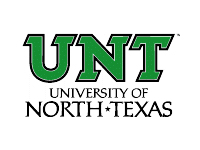Below is a summary of the abstract you submitted. Presenting author(s) is shown in bold.
If any changes need to be made, you can modify the abstract or change the authors.
You can also download a .docx version of this abstract.
If there are any problems, please email Dan at dar78@pitt.edu and he'll take care of them!
This abstract was last modified on April 21, 2015 at 11:21 p.m..

When the SEA-PHAGES Program launched in 2008, the scientific focus was on the isolation of a collection of bacteriophage that were capable of infecting a single host organism, Mycobacterium smegmatis MC<sup>2</sup>155. This effort has grown to involve several thousand students each year and has resulted in almost 6,000 phage isolates. Recently, the program has expanded to additional host organisms, including Arthrobacter and Rhodococcus. In each case, a single species has been utilized as host. At the University of North Texas (UNT), we have begun to pursue an alternate strategy within the genus Streptomyces. Like the other SEA-PHAGES hosts, streptomycetes are high G+C, gram-positive bacteria in the order Actinomycetales. This genus is extremely diverse, with almost 600 named species, and includes a number of industrially important organisms such as antibiotic-producing strains. In our studies, we have begun to explore the variety of phage types across species in this diverse genus. Rather than focusing on a single host species, we are seeking to develop collections of phage from several different Streptomyces species. To date, we have successfully introduced two Streptomyces species for use in our undergraduate phage hunting sections, S. griseus and S. venezuelae. Other host species on which phage have been isolated in the research laboratory are also currently being evaluated for suitability for the classroom, including S. finlayi, S. toxytricini, and S. albus. To date, approximately 120 phage have been isolated using members of the genus Streptomyces as host. The 52 genome sequences available at this time show a great deal of diversity, grouping into 9 clusters and 7 singletons. There are several reasons why additional institutions should consider adding Streptomyces phage hunting to their courses. First, the expected diversity of phage types in the genus promises to be extensive, providing exciting opportunities for phage discovery by participating undergraduates. Second, the procedures for growth of Streptomyces cultures are generally no more difficult than the procedures for Mycobacterium, although there is a slight learning curve for methods specific to the harvesting of spores for cultures and for obtaining dispersed liquid cultures. In general, the procedures utilized for phage isolation in Streptomyces require simple media (Nutrient agar with a media supplement) and do not require the use of top agar, further simplifying the isolation process. As well, an adapted version of the SEA-PHAGES Resource Guide is available for use with Streptomyces. For institutions looking for expanded opportunities for phage discovery, Streptomyces species can serve as an exciting option with a growing collection of proven host species from which to choose.

